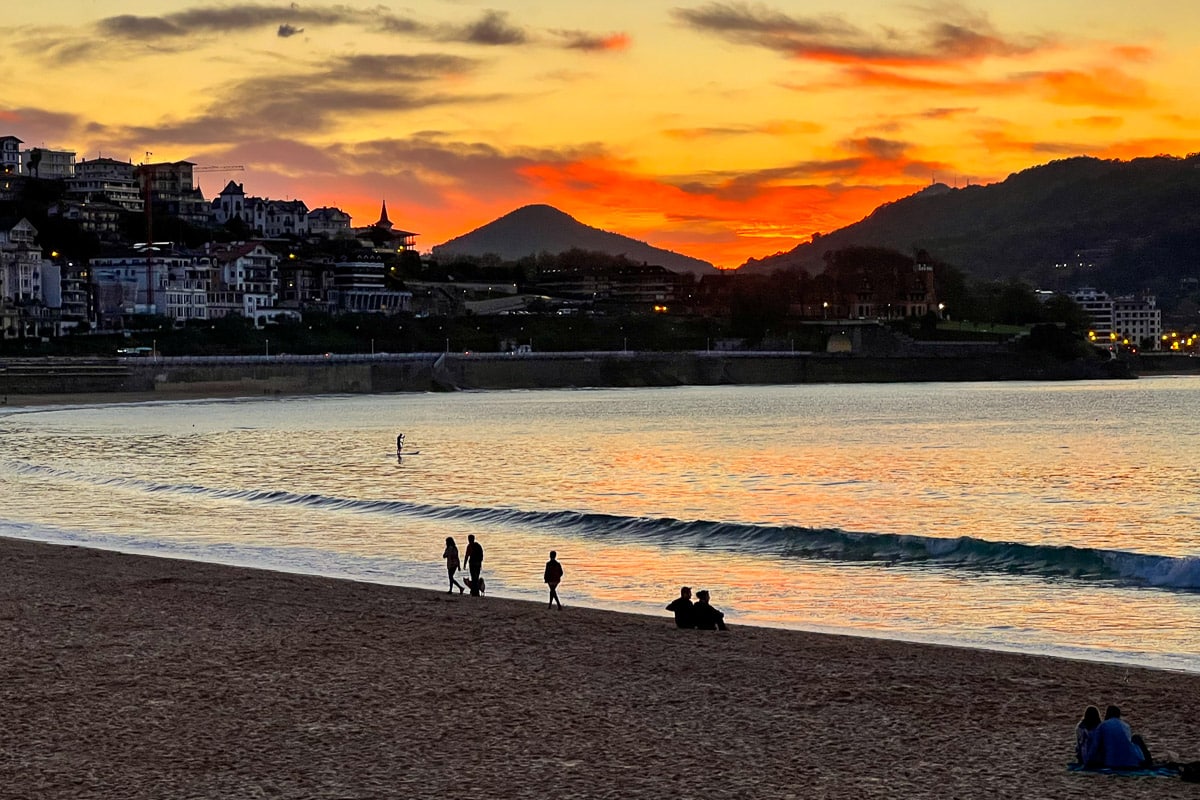
When we're deciding where to travel, we're usually looking for somewhere we haven’t yet visited. And, typically, we’re planning travels just for the two of us.
But this fall, we decided to return to Northern Spain, this time with a group. We were motivated to share our enthusiasm for all things Spanish, to sample Spain’s food and cultural monuments with others who may never have traveled there, and to revisit five of our favorite cities in Spain.
So we set out to visit Barcelona, Zaragoza, Logroño, San Sebastián, and Madrid with a small group of twelve travelers, some with extensive travel experience, and some without a lot. We’d visited all these places before on our own, some as recently as last year. In the cases of Barcelona and Madrid, we considered ourselves residents at one time, when we settled into apartments more than four decades ago.
This return to Spain with a group was eye-opening. Spain never fails to delight in how it changes and how it stays the same. (Or as one taxi driver exclaimed, just as the Spanish know how to do things right, they are equally adept at doing things wrong.)
Here are notes on new discoveries in each of the cities, plus new experiences we had thanks to the dynamics of the group. For a more traditional post about the best things to see and do in each of these cities, check out these posts.
The 10 Best Things to Do in Barcelona
The Two Cathedrals of Zaragoza
San Sebastian City of Pintxos
What to See and Do in Madrid
Table of Contents
What’s old is new in Barcelona
While reports from Barcelona often center on over-tourism, we were comfortable getting around without feeling crushed. With advance planning, a November visit, and nice hotel accommodations (Hotel Las Balmes in the Eixample section of town), we found the city in a relaxed mood.
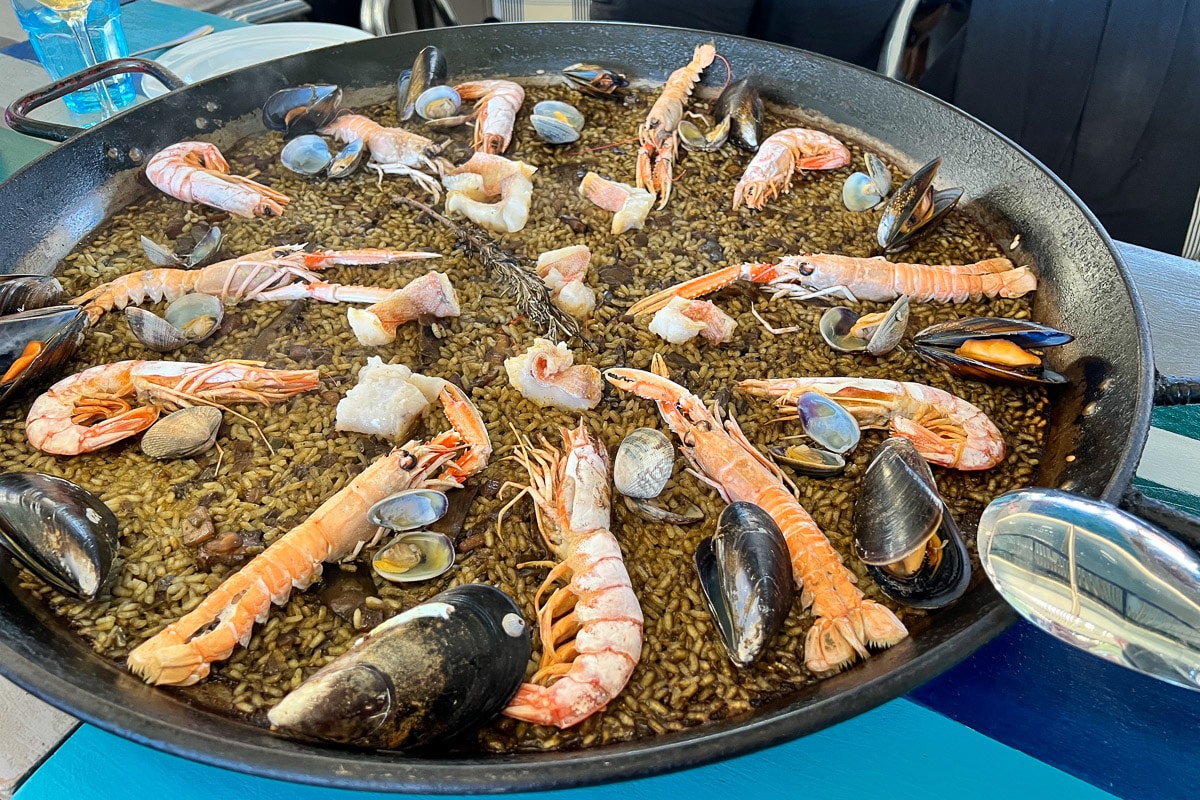
Paella
We consciously chose to spend a Sunday in Barcelona so we could enjoy a traditional paella by the sea. It turned out the paella wasn’t all that traditional (no socarrat?), but the open air atmosphere on the beach was welcome. It gave us a chance to visit this section of town remade for the 1992 Olympics, along the beaches east of Barceloneta. It would be quite a hike from Las Ramblas, so catch a taxi.
The El Xiringuito Escribà restaurant surprised us with many starter dishes, including a stuffed puffy bread crisp, mussels, and mixed salad, along with a choice of paella options. We selected seafood paella, and were surprised, too, at what seemed to be a new twist. The paella, we were told, was not darkened by squid ink but by artichokes with caramelized onion. Mixed reviews from the group on these new innovations, though we ate almost all of three large paellas.
La Sagrada Familia
We dashed off to meet a fixed entry time at La Sagrada Familia (pretty much a necessity for individuals or groups), so skipped dessert and coffee after paella, a very un-Spanish thing to do!
We’ll never tire of seeing the Sagrada Familia, a work in progress. Now that it is enclosed and a functioning church, both exterior and interior make more sense. From the lush east entrance depicting the birth of Christ, through the soaring rainbow of light in the interior, to the stark sculptures of the Passion on the west exterior, our visit seemed to flow easily despite the crowds.
New to me this visit were the religious fixtures (confessional, vestry, pulpit) and furniture on display in the apse. The museum below the basilica is still a fascinating historic look at Gaudi’s project.
Parque Ciutadella and the Born
I’m not sure why we haven’t walked through these districts on recent visits, but we were glad to see the park again and to learn more about Barcelona’s 17th-19th Century history in the Born barrio. Check out the huge old market building (Born Cultural Center) now converted to an archeological site. This easily walkable neighborhood, wedged between the Park and the Gothic Quarter, includes the historic Sta Maria del Mar church and a monument to those killed in the War of Succession.
Search for hotels in Barcelona here.
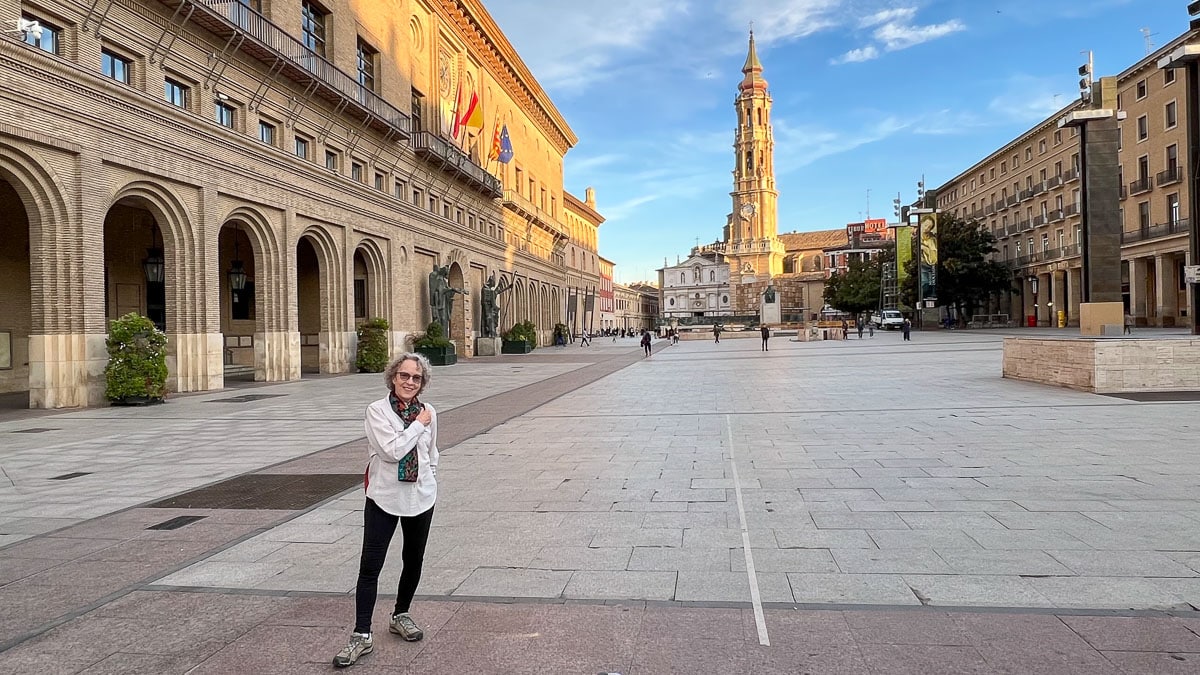
Don’t overlook Zaragoza
Conveniently located on the fast AVE train line from Barcelona to Madrid, Zaragoza is curiously skipped by many tourists. Do make a point of stopping for a night or two. The historic Zaragoza (named from the eventual contraction of Caesar Augustus) offers several Roman ruins. We just skirted an amphitheater in the city center this visit, and focused on food plus the famous palace and churches. (If you have time, we highly recommend the Goya Museum in Zaragoza, too.)
Restaurants and Tapas
Zaragoza, in the middle of the Aragon region and seated on the Ebro river, is a real foodie town. We wanted to take time for a restaurant meal, for tapas, and for a cooking class, and managed to enjoy two full days of eating and sightseeing with our group of twelve.
We can recommend Parrilla al Barracin, which we'd visited last year, for great local fare. The region is known for its lamb. We had a spontaneous stop at Gran Taberna Tragantua, a wonderful location near La Seo and the main plaza when you are hungry and tired of sightseeing. We shared fresh salads with tuna, wild mushrooms, excellent croquettes, and pimientos del Padrón (grilled and salted green peppers).
For a tapas crawl, visit the “Tubo” area (ask your hotel for directions). The tiny “Champi” corner bar serving only grilled mushrooms was a hit for many in our group.
A notable meeting place for coffee or wine is in the Plaza San Felipe, not far from the Basilica de Nuestra Señora Pilar. Enjoy sitting outside of Restaurante Montal, but be sure to visit the Montal shop for a selection of local foods and wines. Stock up on the best olive oil and you won't regret it. Hmmm, online shopping available, it seems.
And if you have a chance to plan a cooking class or food tour, contact La Zarola. Last time in Zaragoza, Tom and I learned how to make a tasty tortilla Española – consistently! This time, we took a more chaotic approach to team meal preparation, and had a fun time and delicious meal.
The Aljaferia
The Aljaferia Palace was built for Islamic rulers in the 9th Century and later adapted for the King and Queen Ferdinand and Isabel in the 15th Century. With good guides and museum displays we were able to see the nuances of Moorish art emerging from Arabic art and understand how Christians used the craftsmanship of the Moors while they remained in Spain. (When you visit Spain, it won’t be long before you learn that Jews and Moors were expelled or forced to convert to Catholicism the same year Columbus, or Cristobal Colon, reached American shores.)
The Basilica, La Seo, and the Plaza de la Señora del Pilar
We’re written about the two cathedrals in a previous post, but were struck again by the huge plaza – one of the biggest in all Europe – and the gorgeous tower and exterior wall of La Seo. La Seo, like many churches in Spain, is a layered affair: a gothic church built upon a Romanesque church, built upon a mosque. Allow time to take in the excellent tapestry exhibit inside.
The huge Basilica of Our Lady of the Pillar (neo-classical style) is so called because of St. James’ vision of Mary atop a pillar. She commanded him to build a church on the spot. The plaza in front of the church is still the site of one of Spain’s biggest celebrations on the city’s patron saint day, October 12. Miracles keep on happening; you can see unexploded bombs from the civil war mounted inside. (The church was spared!) And you can kiss the pillar upon which the church was built.
By the way, Zaragoza is known for its chocolate, chocolate covered fruits, and candies. You’ll find shops nearby the Plaza.
Search for hotels in Zaragoza here. We liked the historic and well-located Hotel Catalonia El Pilar.
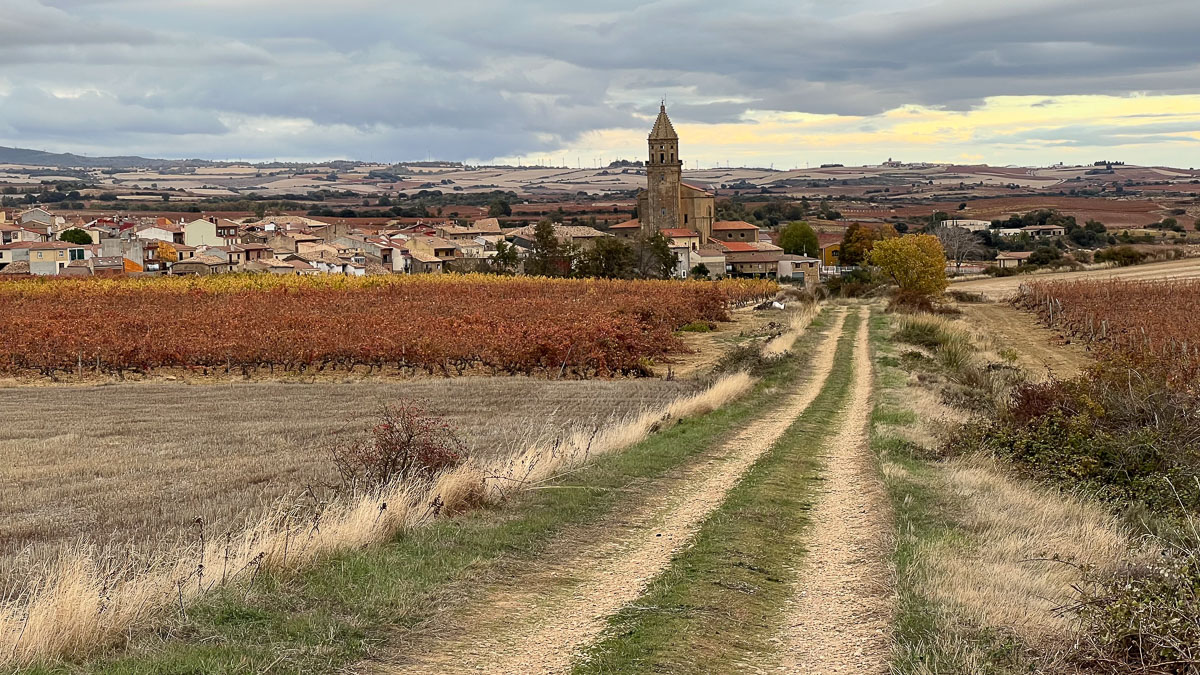
Logroño and La Rioja
Of the cities on this tour, Tom and I were least familiar with Logroño. We walked through here when we did the Camino de Santiago back in 2011, and visited again a few years later, even considering moving to this Rioja region. For those keeping track, we've now moved from the Catalonia region through Aragon to the Basque Country!
The attraction here is food and wine. In the city, find famous Calle Laurel for any number of wonderful pintxos. We can recommend La Taberna del Tio Blas in particular.
New for us this trip was an excursion out into the Rioja countryside, visiting the pueblo of Laguardia, taking in views of the colorful autumn vineyards, and stopping for photos at the Calatrava-designed bodega Ysios. It was already dark when we stopped for pictures at the flashy Marques de Riscal Hotel designed by Frank Gehry.
Lest you think La Rioja is only about old vines and new wines, pull over to have a look at the 5,000 year old dolmen burial site.
Search for hotels in Logroño here.
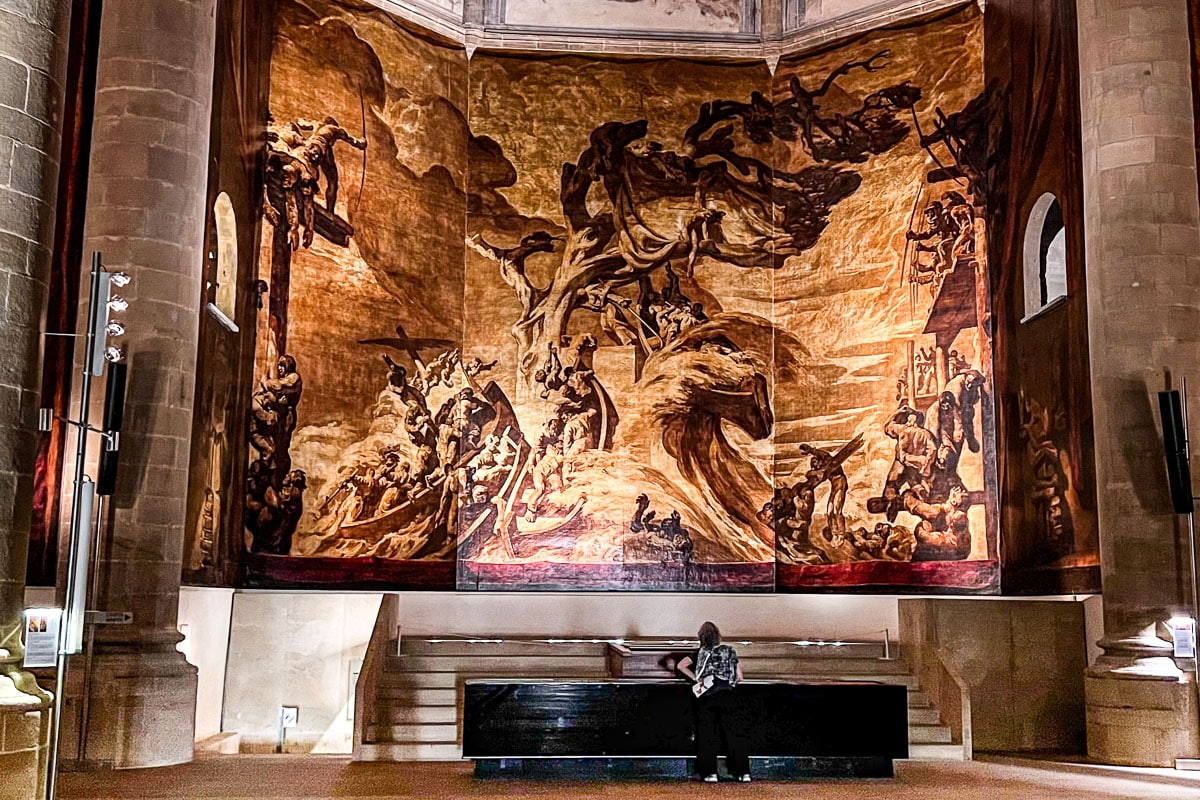
San Sebastián, City of Pintxos
We needed more than our brief visit a few years back to get a sense of what San Sebastián is all about. Of course it’s known for its great food. On this tour, we were somewhat disappointed at our slapdash approach to pintxos. But ultimately, we discovered the city's beautiful cove with wharf for small fishing and sailing boats, an old town full of great bars and restaurants (and not enough time to discover them), and a thriving shopping district. Take a walk around the bridges crisscrossing the Urumea River to get a sense of outdoorsy San Sebastian. It was even more vibrant than usual when we visited, hosting thousands of marathon runners.
Food, Style, Scenery
San Sebastián is the seat of the Guipuzcoa province (one of three of the Basque capitals). The garden and neighborhood around the province offices seem to reflect the style of the many French visitors who pass this way. Fine shops and coffee shops line the boulevards.
We will remember the dessert at Restaurant Narru for Tom’s birthday, courtesy of others in our group who actually made reservations. (Travel tip: if you can't make reservations online, don't despair. Try walking up early in the day and ask. I'm told asking never hurts.) We’ll also remember the simple cup of red wine we had, overlooking the beach at sunset, for a mere four Euro ($4.25) for two!
Besides the famous pastry shop Otaegui with its typical pantxineta dessert, I'm sure everyone in our group will remember relaxing with coffee or beer in the Plaza Constitucion, right in the center of the old town.
San Telmo Museum
Not to be overlooked is the San Telmo Museum, the oldest museum in the Basque Country (established in 1902) presenting a thorough history of Basque culture and society. It features temporary exhibits along with its permanent collection. But our reason for visiting was to see the Sert canvases, eleven scenes by painter José María Sert (Barcelona, 1874 – 1945) commissioned in 1929. (Sert's work in the Vich church in Catalonia was severely damaged in the Spanish Civil War.) His San Telmo canvases are beautiful, stark (varnish on metallic backgrounds), non-religious scenes of the life and history of Gipuzkoa.
But if you want your religious fix, visit Saint Vincent Church near San Telmo, or the old and new cathedrals.
Search for hotels in San Sebastián here. Our group loved the Hotel Catalonia Donosti and its exceptional restaurant.
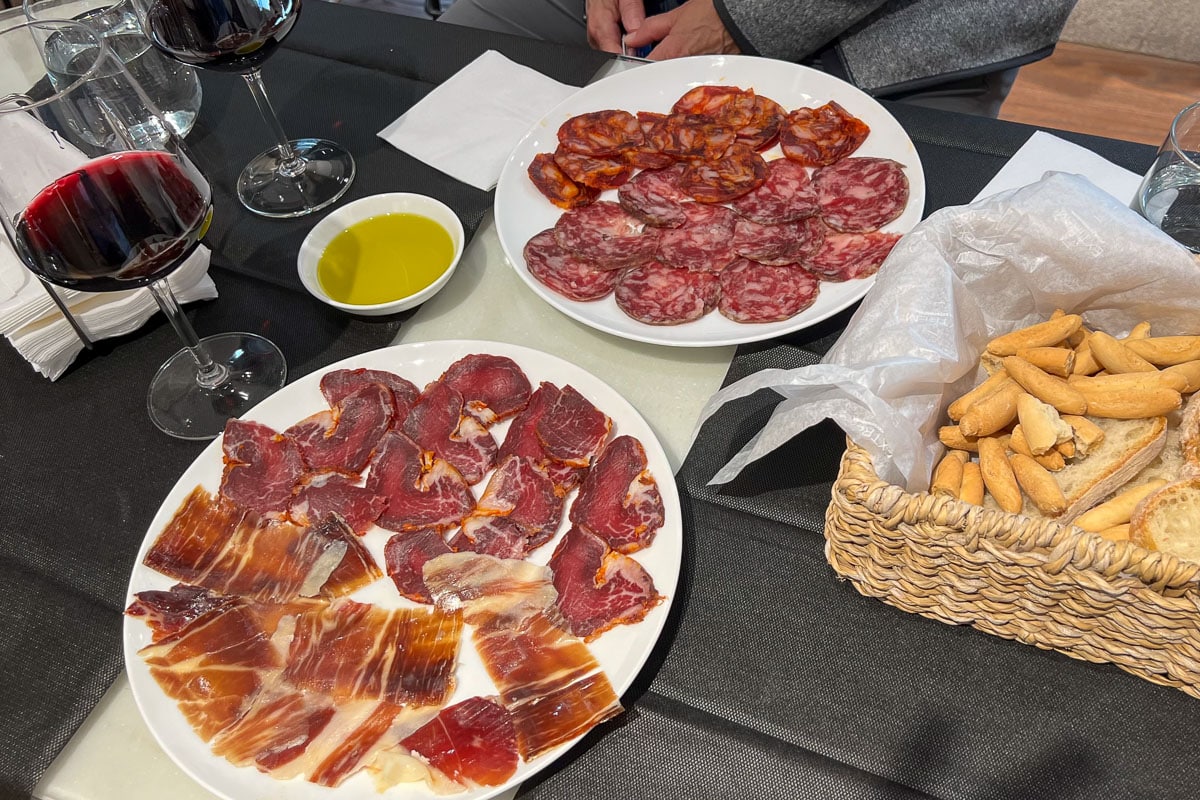
More Madrid
And finally back to Madrid, a city we think might be the most underrated in all of Europe. (But then, we had the advantage of having lived there for more than a year and return regularly.)
Favorite Old Bars
What’s new in Madrid? Starting with the old…we are pleasantly surprised that it's still possible to visit some of our favorite places from the past. During free time, we shared two with our group: The Taberna Real in the Plaza Opera was one we couldn't afford back when we lived in Madrid, but is a fine stop for wine or vermouth and a plate of olives, if nothing more. The Cerveceria Alemana in Plaza Santa Ana hasn't changed a bit, not the staff nor the menu. We like to go inside at odd hours of the day (versus sitting in the busy square) to get the full effect. Anchovies, albóndigas (meatballs), ensaladilla rusa (potato salad) are recommended, but just point to what you want in the window display case and you can't go wrong.
New Eats in Malasaña
We have loads of recommendations for places in the bustling Malasaña neighborhood north of the Gran Via, but lacked the time to meander about with a group to sample them. Our farewell dinner, however, was in the capable hands of La Carbonera, and was quite a treat. They specialize in cheeses and wines and compatible dishes. It's easy to find, near Plaza España.
Our next visit to Madrid will surely include another walking food tour. While our group was regaled with a classic food tour ending at the wonderful Casa Ciriaco, next time we'll be seeking a Malasaña tour with places new to us, just to keep things fresh!
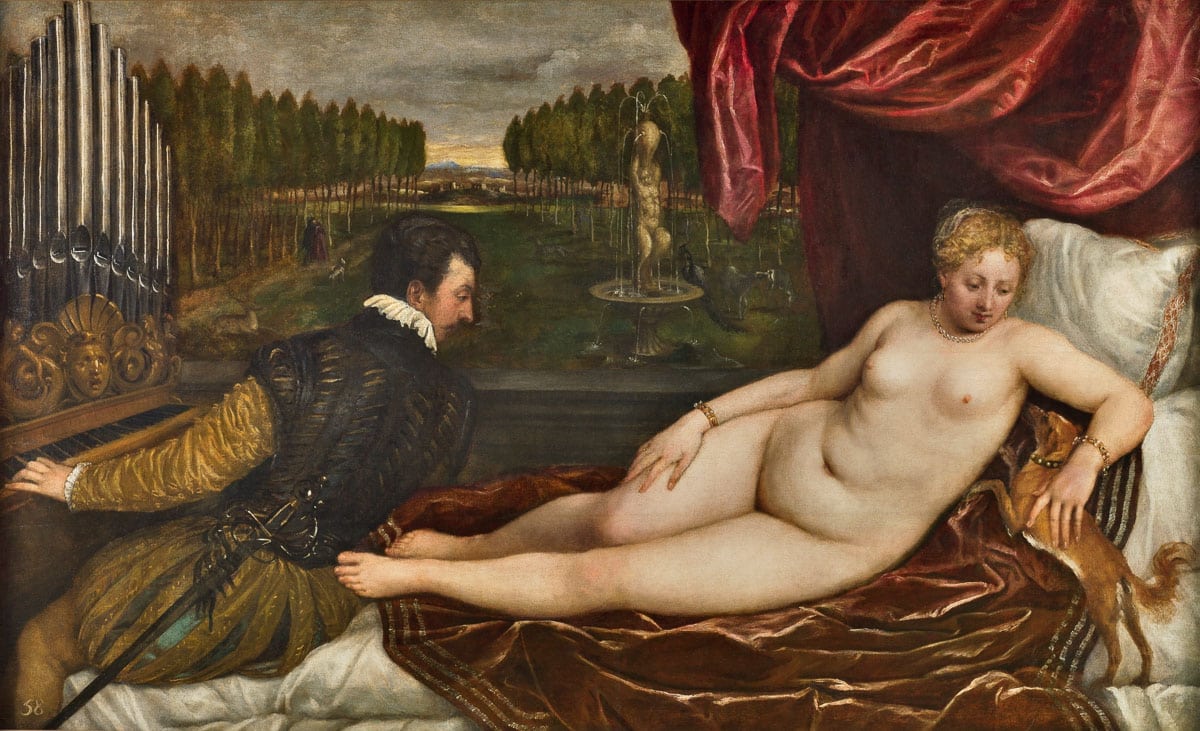
Rediscovering the Prado and Reina Sofia Museums
The Prado Museum and Reina Sofia Museum still introduce us to new works, new artists, and old masters. This visit to the Prado included a guided tour arranged via American Friends of the Prado. With a guide, it's possible to have a good look at the masters, but also appreciate the Prado's collection as a whole. The juxtaposition of select works is, well, artfully arranged and inspiring. For example, Garden of Eden depictions by Titian and Rubens hung together; the Picasso Bust of a Woman (donated by AFP) hanging with portraits by Velazquez; Goya's Maja Desnuda hanging with Titian's Venus.
The Reina Sofia boasts Picasso's Guernica, of course. But during this visit we had a long look at that work, as well as several works by Ángeles Santos. If you have a chance to revisit either museum, do! You will see it like never before.
We will always return to Madrid, knowing we have so much more to discover. And Madrid is a a great base for travel, with easy day trips including UNESCO World Heritage Sites close to the city. Read Tom's latest on our side trips to Toledo here.
Search for hotels in Madrid here. In Madrid, we especially like the NH Collection Madrid Palacio de Tepa, which has the added benefit of being very near the Cervecería Alemana.
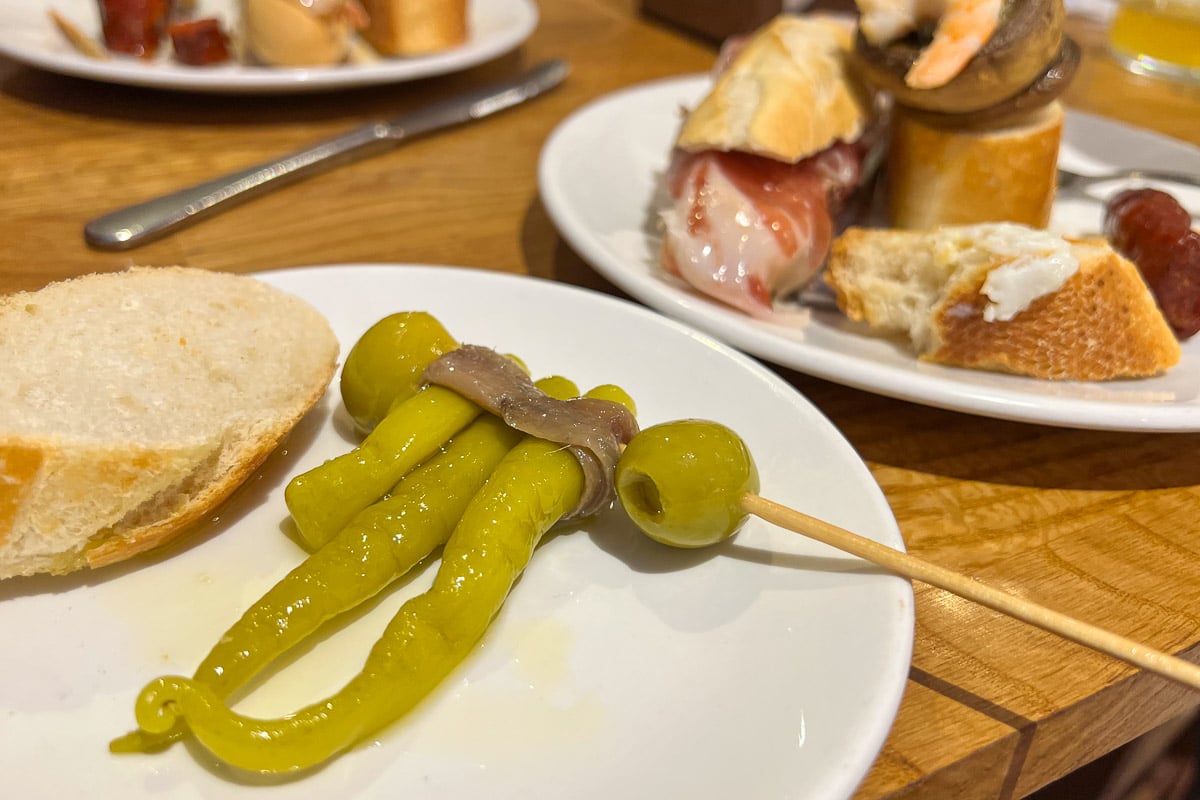
Travel Notes. Security, Packing, Insurance
Simple reminders about travel abroad in this day and age: We were a small group with our metro and intercity transportation arranged in advance. But still, people handled their own luggage on and off buses and trains. So we remind ourselves and travelers to pack light enough so you only have to manage a couple bags per person. Those two are 1) a roller bag (small enough that it can be hoisted onto and off of a train and qualify as an airline carry-on if need be), and 2) a carry-on (backpack or shoulder bag). Be sure it can be zippered or fastened shut.
An optional small purse or light day-pack that can be carried close to the body is advisable. But be sure any additional bags you might be schlepping can either be zipped tight and or tucked inside one of your main bags. The idea is that you can manage stuff yourself, including through airports, across train stations, and through busy streets to reach hotels or public transit. It's a lot easier to keep track of two or three items than four or more.
Want a refresher on packing for your international journey? Read our complete guide to packing.
As of this trip in November 2022, Spain required masks on all public transportation. Keep your masks handy. While airlines had dropped the requirement, we still advise donning your mask in airports, planes, and any crowded stores, museums or streets.
Although we required everyone to carry travel insurance for our Travel Past 50 Tour, we were lucky in that all connections coming and going went well, and no one got sick or injured. To a person, though, the group was glad to have the peace of mind.
Up Your Travel Skills
Looking to book your next trip? Use these resources that are tried and tested by us. First, to get our best travel tips, sign up for our email newsletter. Then, be sure to start your reading with our Resources Page where we highlight all the great travel companies and products that we trust. Travel Accessories: Check out our list of all the accessories we carry to make getting there and being there a lot easier. Credit Cards: See our detailed post on how to choose the right travel rewards credit card for you. Flights: Start finding the very best flight deals by subscribing to Thrifty Traveler. Book your Hotel: Find the best prices on hotels with Booking.com. See all of the gear and books we like in one place on our Amazon shop.Got a comment on this post? Join the conversation on Facebook, Instagram, or Threads and share your thoughts!

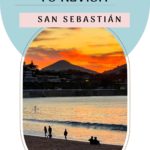
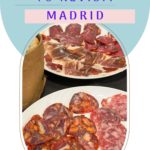
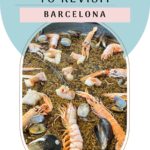

Comments are closed.